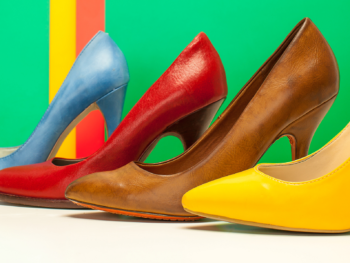Cofemel – Sociedade de Vestuário SA v G-Star Raw.
Background
Since the 1990’s G-Star has been the proprietor or exclusive licence holder of trade marks including G-STAR, G-STAR RAW, G-STAR DENIM RAW, GS-RAW and RAW with jeans, tops and other clothing known under the design name ARC and ROWDY. Cofemel similarly makes clothing and produces similar items under the TIFFOSI trade mark. On 30 August 2013, G-Star took to the Portuguese courts requesting that Cofemel be sanctioned and made to stop producing clothing which resembled their ARC and ROWDY designs. G-Star also claimed that their clothing should be protected by copyright and asserted that they are “works” as they are an “original intellectual creation”. This is the idea that this case is centred around and the idea that has changed the outlook for copyright protection throughout the EU.
Cofemel argued that clothing designs could not be classified as “works” in the context of copyright legislation and therefore they were not entitled to copyright protection as G-Star insisted.
The court of first instance in Portugal agreed with G-Star and ordered Cofemel to stop producing the items immediately and cease infringing G-Star’s copyright. Further, Cofemel were to pay a sum corresponding to the profits they made from the sale of the clothing they produced whilst infringing copyright and a further daily penalty payment in the event of any further infringement of G-Star’s copyright.
Cofemel appealed this judgement to the Court of Appeal in Lisbon. The Court of Appeal upheld the initial decision and went further to state that copyright protection extended to works of applied art, industrial designs and works of design provided that the subject matter is original. They reinforced the principle that works of the author’s own intellectual creation were to be afforded copyright protection.
Cofemel further appealed to the Supreme Court of Portugal where a number of things were considered, namely: whether the clothing designs of G-Star in issue were designed either by designers employed by G-Star or by designers acting on their behalf who assigned their copyright of the designs to G-Star; whether the clothing designs are the result of manufacturing process recognisable as innovative in the fashion world and whether the designs are characterised by the positioning and assembling of parts of the clothing which had been essentially copied by Cofemel. The court also considered whether Article 2(1)(i) of the Code on Copyright and Related Rights clearly includes works of art, industrial designs, applied art in the list of protected works. They determined that the Code does not specify the level of originality required for copyright protection to be afforded to “works”. They also determined that there was no Portuguese case law or precedent set out on the key issues brought to them by the dispute between Cofemel and G-Star. The Supreme Court were also considered whether national legislation based on the EU Directive 2001/29 could be interpreted as to afford copyright protection to clothing designs which generate a specific and aesthetically significant visual effect. On this basis, the Supreme Court of Portugal decided to stay the proceedings and referred the case to the Court of Justice for an overarching ruling.
The Court of Justice’s Take
It is clear from previous case law and precedents set out regarding the Information Society Directive 2001/29, that two conditions must be satisfied for a “work” to be afforded copyright protection. Firstly, there must be original subject matter which stems from the author’s intellectual creation. Secondly, the classification of a work is reserved for elements that express the author’s creation as set out in the case of Infopaq International in 2009. National authorities and third parties whom the protection is in place for must be able to clearly and precisely identify the subject matter to be protected and there is to be no subjectivity in determining the subject matter to avoid any legal uncertainty amongst courts. The court in this instance stated that in order for a work to be afforded copyright protection, they work must meet all of this criteria. The Court of Justice determined that as a general rule, subject matter protected as a design was not being treated in the same way as subject matter constituting works under the Directive 2001/29.
The Berne Convention provides that industrial designs and models may be afforded a particular protection that differs from the protection available to literary and artistic works falling within the scope of the Convention. The EU legislature opted for a system which allows protection for designs and copyright protection not to be mutually exclusive. Directive 98/71of the EU provides that Member States may individually determine the level of originality required for a work to be afforded protection. Now, if we do a loop back to what I set out above, the Supreme Court of Portugal referred this case to the Court of Justice because there was a distinct lack of precedent and case law in their own state. The feeling seems to generally be that the protection of designs is on one side of the coin and copyright protection is on the other.
The Court of Justice determined that having regard to both EU legislation and the Berne Convention, designs can be considered “works” within the meaning of Directive 2001/29 and therefore meeting the requirements to gain copyright protection. However, a further issue was to be examined by the court, whether the classification of “works” having regard to the said requirements can be attached to clothing designs. The issue at hand for the court was whether designs that create a visual and aesthetic originality constitute the criterion for attaining the copyright protection afforded to other “works” or whether this type of “work” should be kept separate from copyright attributed “works”. The Court of Justice took issue with the factor of aesthetic originality constituting the criterion for copyright protection.
The court discussed that the protection of designs and copyright protection pursue fundamentally different objectives and are both subject to very stringent rules. The Advocate General advised that the purpose of the protection for designs is to protect the subject matter as whilst the matter may be new and distinctive and have originality, it is likely to be mass-produced. Further, design matters generally are for a limited time, as with fashion trends, new designs are on a never ending treadmill and the purpose of the protection is to allow a return on the investment and creativity in the design. Whereas copyright protection is afforded for a much greater duration and is reserved for subject matter that is considered to be classified as works. The Advocate General went further to discuss that it could in fact be undermining both design and copyright protection to afford both protections to one subject matter and concurrent protection could only be afforded in very limited situations.
The Court of Justice confirmed that in order for a work to be afforded copyright protection, there are two essential requirements – the existence of an original object and expression of intellectual creation; and the subject matter must be identifiable with sufficient precision and objectivity. The work must express an intellectual creation of its author. Creativity is really at the heart of intellectual property law in general with substantial weight afforded by courts all over the world to the creative mind of the person who made the work. Further, it is agreed the world over that genuine creativity warrants this type of protection.
The bottom line now is that if a design meets this criteria, it can be considered a “work” and therefore afforded copyright protection.
Impact on the Fashion World and UK Copyright Law
The UK is in the midst of leaving the European Union and as such some may feel that European patent law may be of no major concern to us. However, this decision was made whilst we were still part of the EU and may still have a bearing on what intellectual property provisions are yet to come for the UK.
In the UK, copyright legislation requires certain types of work to meet further requirements than have been set out by the CJEU and many will feel that this judgement has lowered the bar on the requirements for being provided protection.
Many in the fashion industry will likely welcome this judgement as it will allow their creativity and originality to be sufficient for copyright protection. However, it also throws up a host of questions for the UK and other states whose present domestic legislation is no longer in line with that of the EU. In the UK, the category of “artistic work” will have to be reconsidered. UK courts have generally taken quite a narrow approach to the interpretation of copyright legislation and have previously refused copyright protection to artistic works that did not have a functionality. This will now be in dispute.
With the UK moving through the process of extricating itself from the EU, it will be interesting to see what impact this ruling, which for the time being in binding on UK courts, will be on intellectual property law in a post-brexit Britain.
If this issue is something that you or your business face, please get in touch with our Intellectual Property team.
Blog by Lucia Spadaro, Trainee Solicitor
Contacts:
Paul Motion, Partner and Solicitor Advocate prm@bto.co.uk T: 0131 222 2939
Lynn Richmond, Partner lyr@bto.co.uk T: 0131 222 2939
Jonathan Tait, Solicitor jta@bto.co.uk T: 0131 222 2939









 “The Show Must Go On”
“The Show Must Go On”
Leave a Reply